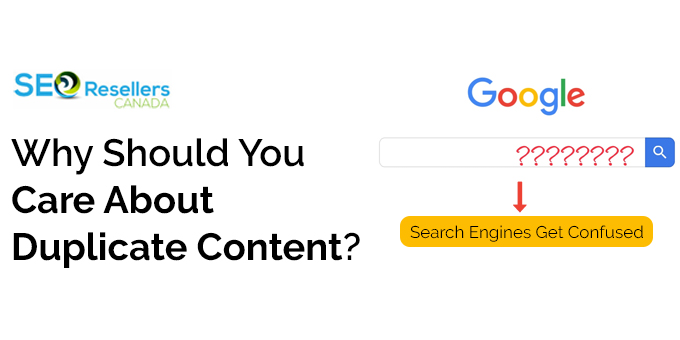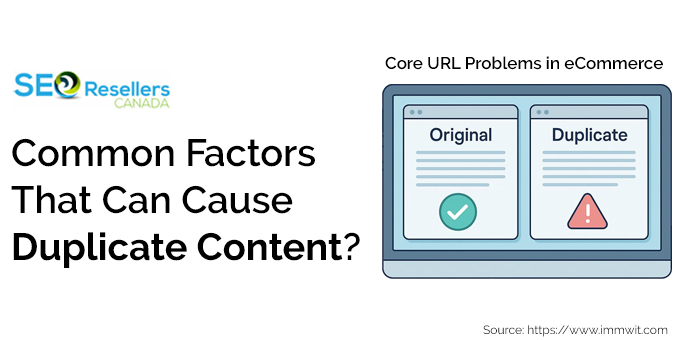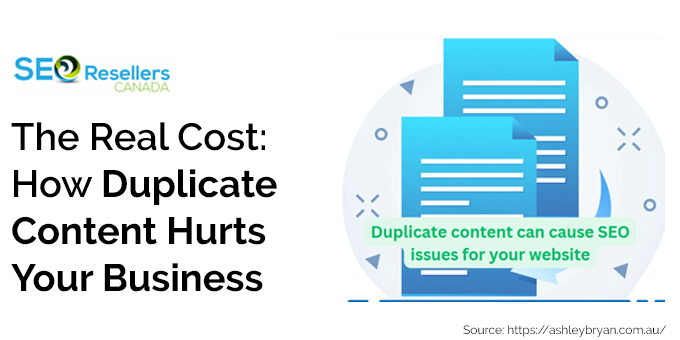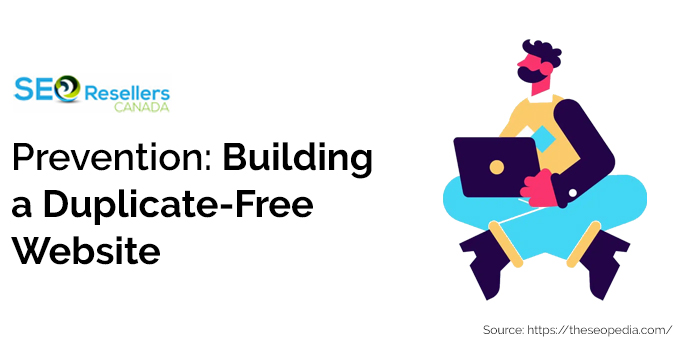Running an online store today means facing numerous hidden challenges. One of the more severe issues is duplicate content. It implies having the same text repeated on different pages of your website. This one problem can be a significant threat to your business without you knowing it.
Google, like other search engines, views duplicate content as a red flag. This could result in, it not being able to recommend your store to online shoppers. When search engines struggle to determine the originality of the content, they tend to lower the ranking of the site itself. That means less online visibility, which, in turn, decreases sales.
The best part is eliminating duplicate content issues can be done with using the right methods. Therefore, knowing the cause aids in taking steps to solve it and drastically improve a store’s standings. Besides this, it also helps with boosting visibility, sales, and offering a better user experience for users. This guide aims to explain how to solve this persisting problem in depth.
1- What Is Duplicate Content in eCommerce?

Duplicate content means the same text appears on more than one web address (URL). According to Moz, About 29% of all web content is duplicate content. For online stores, this happens when the same product details show up at different links. This confuses search engines trying to decide which page to show in search results.
Even though Google does try hard to index and show pages with distinct information. It can sometimes fail because users want to see a diverse cross-section of unique content when they do searches. So, when your site has duplicate content, you’re asking search engines to guess which version matters most—a risk you shouldn’t take in today’s market.
2- Why Should You Care About Duplicate Content?

Duplicate content affects more than just your website—it hits your bottom line. When search engines find duplicate content, bad things happen:
2.1- Search Engines Get Confused
At times, search engines come across multiple versions of the same content on your site. At that moment, they face a difficult decision about which page deserves a better ranking. Search engines like Google can’t tell which version of your content should rank higher. This often means both pages rank lower than a single, unique page would. This shows how important fixing duplicate content is.
2.2- Your Crawl Budget Gets Wasted
Every website gets only a limited amount of attention from search engines, and duplicate content wastes this valuable resource in several ways. Search engines only spend a limited time checking your website pages. This is called your “crawl budget.” When they waste time on duplicate pages, they might miss your unique, valuable content. This means fewer chances to rank for searches and attract customers.
2.3- The effectiveness of our Links Gets Weaker
The power of backlinks to your site can be seriously diluted. It happens when multiple versions of the same content exist, causing significant ranking problems. When other sites link to different versions of the same content, the power of these links gets split up. Instead of one page getting the full benefit, that value spreads across duplicate pages—making your SEO Strategies less effective.
2.4- Shoppers Have a Worse Experience
Customer experience suffers greatly when shoppers encounter the same thing again and again on your site. It can irritate them to the point where they abandon their shopping carts. So, avoid letting a customer see the same product details on multiple pages of your site. This creates confusion and makes your store seem sloppy.
3- Common Factors That Can Cause Duplicate Content?

Given the complexity of a website, there is a lot that can cause this issue. However, to fix duplicate content, you need to know where it comes from. For online stores, these are the most common causes:
3.1- Are Your Product Descriptions Original?
Many online stores accidentally create duplicate content by using the same manufacturer descriptions that hundreds of other websites also use. Many online stores use product descriptions from manufacturers. So, when many stores use the same text, search engines must pick which site to rank higher. Big, well-known stores usually win, and smaller stores lose out.
Store owners often create duplicate content by:
- Using the same template for similar products without changing the text
- Using nearly identical content for product color or size options
- Copying descriptions from competitors
3.2- Core URL Problems in eCommerce
URL problems are among the most common technical causes of duplicate content. Here is a deeper explanation:
- Parameter-Based URLs:
When your eCommerce site uses filtering or sorting options, each selection creates a new URL that shows essentially the same content:
- Session IDs:
Some online store systems add tracking codes to URLs, creating multiple versions of the same pages.
- Domain Variations:
Without proper setup, your site might be available through multiple domain versions (https://example.com, http://example.com, etc.), each with the same content.
- Page Numbering Issues:
Long product lists split across multiple pages often have duplicate headers, footers, and menus.
3.3- Unoptimized Cart and Search Results Pages
Cart and search result pages are valuable for user experience but not for SEO. Therefore, when you index these pages, they fill up search engine results and take up your crawl budget. This includes:
- Cart Pages: These often include unique-to-user, dynamic content that you do not want to be indexed.
- Search Result Pages: If improperly set, search results can return a number of URLs like example.com/search?q=shoes, spawning duplication galore.
3.4- Other Technical Issues to Check
Beyond the obvious causes, there are several hidden technical issues that can create duplicate content problems throughout your eCommerce site.
- Print-Friendly Pages: Pages made for printing often duplicate existing content at new URLs.
- Mobile vs. Desktop Versions: If not set up correctly, separate mobile versions can create duplicate content.
- Category and Tag Pages: In systems like WordPress, products may appear on multiple category pages, tag pages, and the main product page—all with similar content.
4- The Real Cost: How Duplicate Content Hurts Your Business

Duplicate content affects more than just SEO—it hurts your whole business:
4.1- What Happens to Your SEO?
The damage to your search engine rankings can be severe when duplicate content issues go unfixed for extended periods of time. Duplicate content creates several SEO problems:
- Lower Rankings:
When search engines must choose between multiple versions of the same content, they often rank all versions lower.
- Wasted Crawl Time:
Search engines have limited time to check your site. When they spend time on duplicate pages, they might miss your unique content.
- Too Many Pages in Search:
Having many duplicate pages in search results can make it harder for your important pages to stand out.
4.2- How Does It Affect Your Shoppers?
Shoppers suffer a serious drop in customer satisfaction the moment they encounter duplicate content, as it makes them doubt the professionalism of your entire business. It can cause:
- Confusion in Search Results: Duplication means that shoppers are presented with more than one version of a product, and they cannot tell the difference.
- Difficult Navigation: Navigational ease is affected by duplicate content, which can lead to the content being ignored.
- Trust Issues: Multiple content duplication indicates unprofessionalism from your side or even failing to meet industry standards.
4.3- What Implications Does It Have on Your Sales?
The revenue implications of duplicate content go beyond traffic figures and impact overall store revenue as well as relative standing in the market: in the end, duplicate content hurts profits through:
- Fewer Sales: Visitors who are confused stand less of a chance of converting to customers.
- Reduced Revenue and Visitors: Poorer ranking in search results means a lesser number of users and reduced sales.
- Losing out to Competitors: While you grapple with multi-versioned content, competitors with unique content capture more customers.
5- How To Find Problems with Duplicate Website Content

Finding duplicate content is often the more difficult task when compared to fixing issues that stem from it. The following tools can help with finding problems the quickest:
5.1- Which Tools to Use?
Manually verifying duplicate content can be very time-consuming. There are various software tools that can simplify the duplicate content problem process to a large extent by verifying across your website.
- Site Audit Tools: SEMrush, Ahrefs, and Seobility are some of the tools that can scan your website to identify duplicate content.
- Plagiarism checker tools: They, such as Copyscape and SmallSEO, assist you in finding whether your content is being replicated on other sites or whether you copied it from someplace else.
- Crawling websites: These tools, like Screaming Frog and Prerender, can detect duplicate titles, descriptions, and content within your site.
5.2- What Statistics Do You Analyze?
Your website statistics usually have subtle hints regarding duplicate content issues that are easily identifiable. Some trends in your site statistics could indicate duplicate content:
- Traffic Patterns: Similar pages with the same content could appear up-and-down traffic as search engines alternate which one to display.
- Changes in Rankings: If comparable pages rank for comparable keywords but continue switching places, duplicate content is likely to be the source.
- Crawling Problems: Search engines take a long time scanning specific sections on your website if they are dealing with duplicate content.
6- Practical Solutions: How to Fix Duplicate Content

Once you find duplicate content, there are many ways to fix this problem. These are some of the strategies that can help fix it:
6.1- Using Canonical Tags
Canonical tags are powerful tools that help search engines understand which version of duplicate content is the original and most important one to index. Canonical tags are one of the best tools for managing duplicate content without removing pages that serve a purpose:
The canonical tag tells search engines which version of a page should be considered the main copy. For example:
html
<link rel=”canonical” href=”https://www.example.com/product-page”>
When using canonical tags:
- Make sure they point to the most complete, main version of the content
- Add them in the <head> section of all duplicate pages
- Use full URLs (including the domain) rather than partial paths
- Check they’re working using Google Search Console
6.2- When to Use 301 Redirects
Implementing 301 redirects is sometimes a better solution than canonical tags, especially when you want to completely eliminate access to duplicate pages. While canonical tags suggest a preferred version, 301 redirects force it by sending users and search engines to the main URL:
- How to Set Them Up: You can add 301 redirects through server settings or through plugins in systems like WordPress.
- How to Combine Content: Find groups of similar pages and decide which should be the main version based on factors like current rankings and backlinks.
- What to Check After: After adding redirects, watch your site’s performance to make sure traffic is going to the right pages.
6.3- Structure Your URLs Better
The way you structure your website addresses plays a major role in preventing duplicate content before it even becomes a problem for search engines. Good URL structure can prevent duplicate content from happening:
- Handle Parameters: Use Google Search Console to tell Google how to handle options that don’t change page content.
- Use Consistent URL Formats: Standardize URL formats across your site (with or without trailing slashes, etc.).
- Plan Your Navigation: Design your site structure to avoid multiple paths to the same content.
7- How to Create Content That Prevents Duplication

The implementation of content creation strategies protects against duplicate content problems. It does this while simultaneously creating descriptions that attract customers toward purchase. Plus, the development of an effective content plan represents the fundamental method to prevent duplicate content problems.
Write unique product descriptions instead of using manufacturer descriptions. You should create original content that highlights benefits and meets customer needs.
For example, instead of: “This is a high-quality blue t-shirt made from cotton.”
Write: “Stay cool and look great in our soft blue cotton t-shirt. Perfect for casual days or under a jacket. The breathable fabric keeps you comfortable all day.”
Plus, add extra value by enhancing product pages with unique elements like customer reviews, usage tips, and comparison info. You can even use customers to create unique content through reviews and questions that make your product pages different.
8- Prevention: Building a Duplicate-Free Website

Instead of always fixing duplicate content, developing a comprehensive content strategy for your store is a wise choice. It can prevent duplicate content issues before they start while improving overall content quality. You can do this by:
- Setting Clear Guidelines: Create rules on how product descriptions should be written, how URLs should be structured, and how content should be organized.
- Checking Regularly: Set up regular content checks (every 3-6 months) to find and fix new duplicate content.
- Assigning Team Roles: Clearly define who is responsible for keeping content unique across your site.
9- Which Technical Best Practices to Follow

Following established technical best practices can save you from many common duplicate content problems that plague eCommerce websites across the internet. Several technical practices can help prevent duplicate content:
- Plan Your Site Structure: Design your site with SEO in mind, reducing paths that could lead to duplicate content.
- Create Better Templates: Make templates that include unique elements for each product page rather than duplicating large blocks of text.
- Set Up Your System Right: Configure your content management system to prevent duplicate content through proper handling of categories, tags, and archives.
10- In Conclusion
Duplicate content is a typical problem in online sites that can quietly damage your search rankings. So, by knowing its causes, effects, and solutions, you can transform this challenge into an opportunity to do better than your rivals who overlook this critical aspect of SEO.
Keep in mind that resolving duplicate content isn’t merely about preventing penalties. It’s about curating an experience that can propel your site in search engine rankings. In addition to that, with this guide, you can remove current duplicate content and avoid future issues.
Moreover, repairing duplicate content is not easy, at least initially. However, the benefits are worth it, as one of the best e-commerce SEO solutions for your online business.

















